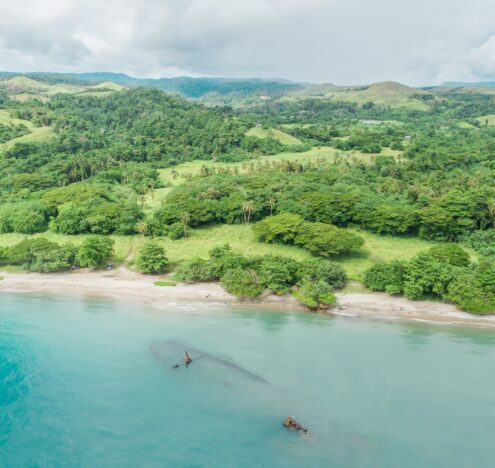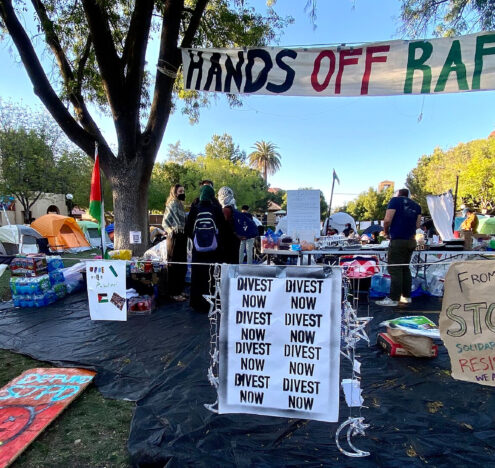The Indian Ocean Region (IOR) is one of the most critical trading routes in the world. Almost two-thirds of the world’s oil trade passes through its Sea Lines of Communication, which extend from Africa’s eastern coast to Australia’s Western coast. Nearly 38 countries share their borders with the IOR, emphasizing its significance. It is also home to the three most essential chokepoints in the world: the Straits of Hormuz and Malacca, and Bab-el-Mandeb.
Over the last two decades, India has strived to become a power in the IOR. But, India’s ambition, specifically its naval strategy, may make the region more vulnerable.
What Are India’s Ambitions?
Indian maritime doctrine, first announced in 2004, evolved from developing a blue water navy to securing seas for its interests. The latest Indian doctrine, announced in 2015, is called “Ensuring Secure Seas: Indian Maritime Strategy” and demonstrates a shift from focusing on freedom at sea to a more ambitious and militaristic vision. This new doctrine is designed to ensure India’s role as a “net security provider” in the region. India, which considers the Indian Ocean its backyard, has expanded its primary areas of interest to include the Strait of Hormuz, Malacca, and Bab-el-Mandeb, alongside other waters like the Arabian Sea and the Bay of Bengal.
India is modernizing its naval capabilities by buying modern naval equipment from the United States and Russia and indigenously developing naval weapons. India is also building alliances and partnerships with other states to strengthen its navy. These include the US-India Comprehensive Global and Strategic Partnership, the Quadrilateral Security Dialogue, and a growing relationship with Russia.
The growing competition between the United States and China is shifting the theater of competition from the Euro-Atlantic to the Asia-Pacific region. India is taking advantage of this situation by posing as a possible balancer to China.
India is upgrading its naval bases and facilities in the IOR and building new ones. A new naval facility is under construction in the remote Mauritian island of Agaléga. Similarly, military infrastructure upgrades are being pushed in the Andaman and Lakshadweep Islands. New Delhi already boasts a nuclear submarine, 16 diesel-electric submarines, two aircraft carriers, and anti-submarine warfare capabilities. In addition, India has signed agreements with Singapore, Sri Lanka, Maldives, and Mauritius that provide India’s navy access to their military facilities.
These actions, and more, indicate that Indian ambitions in the IOR can change the regional security dynamics. All three sub-regions of IOR — South Asia, Middle East, and Southeast Asia — will face the prospect of India becoming a regional hegemon. South Asia, home to two nuclear powers — India and Pakistan — is already under stress. In 2016, India commissioned the INS Arihant, its first ballistic missile submarine, which effectively nuclearized the IOR. Moreover, any attempt at regional hegemony in South Asia by India can threaten Pakistan’s security, negatively affecting already strained strategic stability in the region.
From India’s perspective, the importance of the Middle Eastern subregion is evident because it is home to two chokepoints: the Strait of Hormuz and Bab-el-Mandeb. The Strait of Hormuz is the most crucial waterway because it is the only route to one-sixth of global oil production and one-third of liquified natural gas. The naval prowess of Middle Eastern states, however, is considerably weak. The United States is currently responsible for the security of the Strait of Hormuz. However, it is also propping up India as the net security provider in the region. While speaking at the Shangri-La Dialogue in 2009, then-US Secretary of Defense Robert Gates stated, “We look to India to be a partner and net provider of security in the Indian Ocean and beyond.” Naval superiority may give India clout over other regional states, increasing their dependency on India. Moreover, the relations between the United States and the Gulf countries are mostly dire. As a regional hegemon, India can upset the strategic equation and destabilize the regional strategic balance.
Similarly, the Malacca Strait is an important point, connecting the Indian Ocean with the Pacific Ocean. It is a significant trade and energy conduit for regional states, especially China, Japan, and Vietnam. Any state controlling the Strait of Malacca can coerce other states for its benefit, and any conflict in the region can disrupt this significant trade route, threatening the region’s stability. India has offshore military bases in Andaman and Nicobar Islands, around 1000 kilometers from the Malacca Strait. India also has access to the Changi naval base in Singapore following the 2018 agreement between both states. These bases provide India with operational reach to the Malacca Strait. And suppose India develops the capability to hold the chokepoint at its whims. In that case, it will impact the stability of Southeast Asia as none of those navies can match Indian naval strength — barring China.
What Works in India’s Favor
China is the only power with the capability and the will to counter any strategic imbalance created by the increasing role of India. Beijing has a legitimate interest in the IOR because of its energy and commerce needs. Almost 80% of Chinese oil imports pass through the Indian Ocean. Moreover, a new era of great power competition has dawned on the world order.
The growing competition between the United States and China is shifting the theater of competition from the Euro-Atlantic to the Asia-Pacific region. India is taking advantage of this situation by posing as a possible balancer to China. Indian aim is to put IOR at the center of this emerging great power rivalry. Increasing competition between major powers for controlling the IOR can also have destabilizing effects on the region.
Indian ambitions for regional hegemony in IOR — as evident in the Indian naval doctrine, naval modernization, new alliances and partnerships, building and upgrading naval facilities, and agreements for access to foreign military facilities — can threaten the region’s security architecture. Indian policies of putting IOR at the center of great power competition will negatively affect regional stability.





















